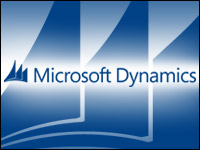
For years Microsoft has been telling us that they have great new products in the pipeline that were competitive, and an approach that was social and customer-centric. For the last couple years, however, we had to watch the slow maturation of that vision.
First there was Windows 7, which was pretty good. Then came Windows 8, Windows 8 Phone, the Surface tablet, and new Microsoft retail stores.
The last step has been getting new enterprise products into the hands of users, and giving those customers the time to come up to speed so they can finally tell a success story.
We have had glimpses of success. The customers I have spoken with were interesting — though a bit out of the mainstream — and many have been too small to qualify for the “enterprise” label.
For example, I once had a valuable conversation about CRM with a company in the aggregate industry. If you aren’t sure what aggregates are, think about the stones embedded in asphalt and concrete, and you’ll have the picture.
Success Stories in the Big Easy
At the annual Convergence conference in New Orleans last week, Microsoft was finally able to take the wraps off the entire analyst experience — or at least they tried. Scheduling conflicts kept me from one or more valuable sessions that would explain the new CRM orientation in greater detail than Kirill Tatarinov’s keynote. However, the keynote was good in its own right. I saw technology and happy customers, and heard user stories that drew me in.
Corporate vice president Tatarinov had a parade of customers on stage, including companies with names like Chobani (the world’s best yogurt, IMHO) beauty products powerhouse Revlon, Shock Doctor, and Weight Watchers — all users of Microsoft applications, all using ERP, and some using CRM.
At this time of the year, I am painfully aware of the saying, “One swallow does not a spring make,” or even four for that matter. Nonetheless, for me the importance of this parade lies in the big names, as well as the reality that many companies can say the same kinds of things about their front-to-back office experiences.
There are more than these four — and that’s what is interesting. In most ways it looks to me like Microsoft has delivered a product set that can compete with any other vendor in the enterprise.
That’s all good. I have to say, however, that for all of Microsoft’s success, there is still more to aspire to. That’s not a bad thing; when there’s nothing left to aspire to, the market is over. That said, for all the progress — and it has been substantial — it looks to me like Microsoft is still transitioning from a company whose software supported manufacturing-age business processes to one that supports social business.
The really good news is that all of the executives I spoke with understand this and the transition required — or more precisely, they understood that a transition is required, and maybe that’s the point. There is an element of thought leadership that is still not quite there. You see it in the Herculean, or possibly Sisyphean need to transition the bulk of the business partners from software vendors to solutions providers.
At the same time, however, I attended a panel discussion of premiere partners who were well versed in the need for, and application of, social technologies, cloud computing and the like. They were also very ERP-centric, which is OK, but I wish Microsoft would convene a similar session on just CRM.
What’s Ahead for Dynamics CRM
On the CRM side, Microsoft announced the acquisition of Netbreeze, a solution that offers natural language processing and sentiment analytics. Combined with the last marketing acquisition, Marketing Pilot, these products should form the basis of an expanded marketing offering. Job No. 1 will be to expand the kinds of analysis Netbreeze can perform, such as influence and intent. Also, predictive modeling needs to take a more prominent position.
The marketing messaging, though, is still raw. For instance, while Marketing Pilot has a spiffy new UI and is well integrated into Dynamics CRM, it carries baggage from its earlier incarnation of a “CRM connector” to ferry data between the two supposedly integrated parts of Dynamics.
That’s a cosmetic issue, and a happy problem given that solving it takes nothing more than revised messaging and no new coding. Indeed, Microsoft has many similar happy problems that involve messaging and positioning for its Dynamics CRM offering.
For example, there wasn’t enough talk about bringing the package together with better messaging around platform, social, marketing and cloud. It will happen, though it’s a shame there wasn’t greater emphasis on those finer points in New Orleans.
With all that, Microsoft continues to make progress in delivering a credible front-to-back office integrated solution that can support large companies like Revlon and Chobani. However, it’s important to make the point that all this brings Microsoft to parity with its rivals, and the name of the game today is leapfrog.
There are a lot of ways that Dynamics can jump, and it will be interesting to watch.



















































